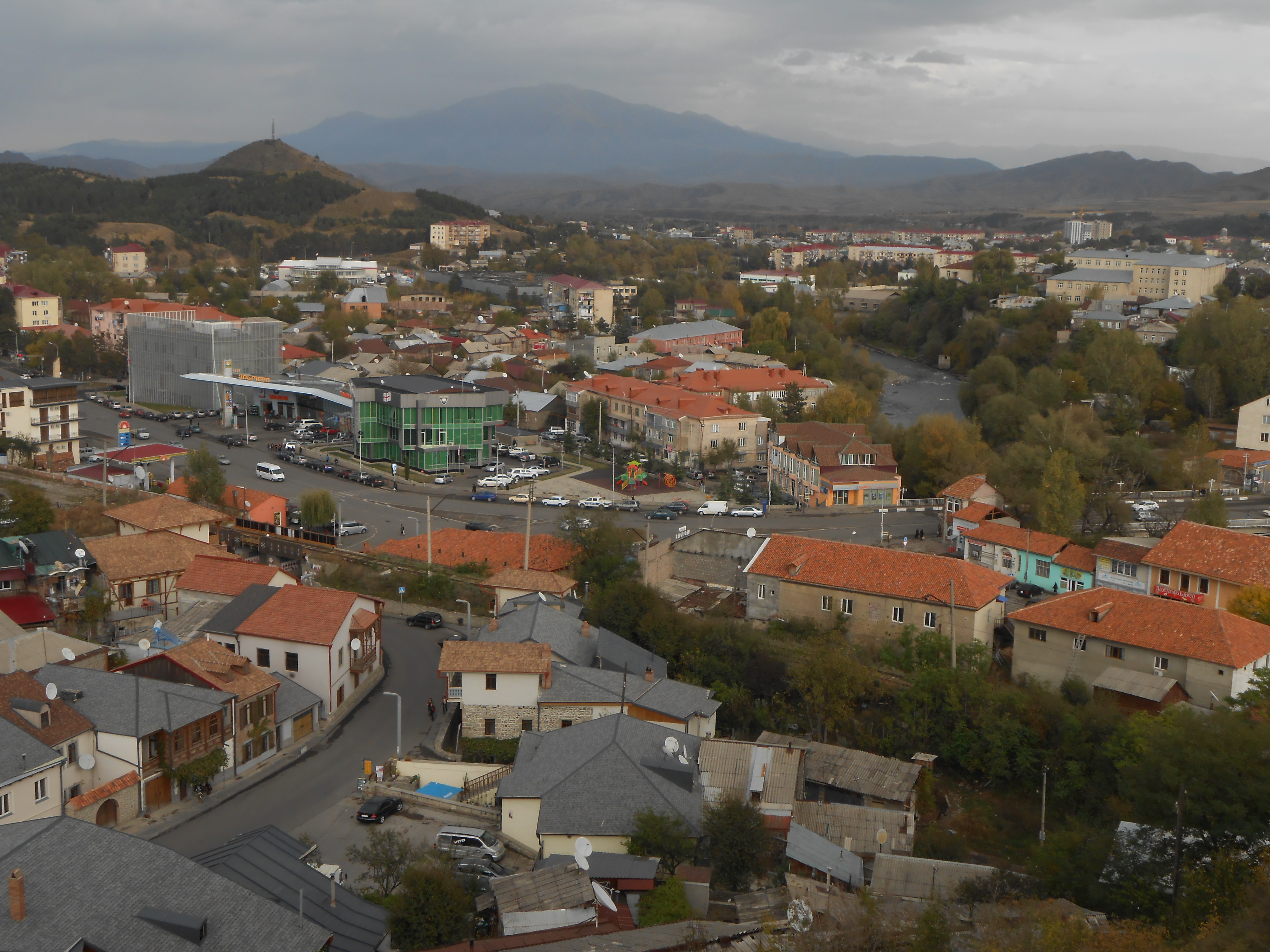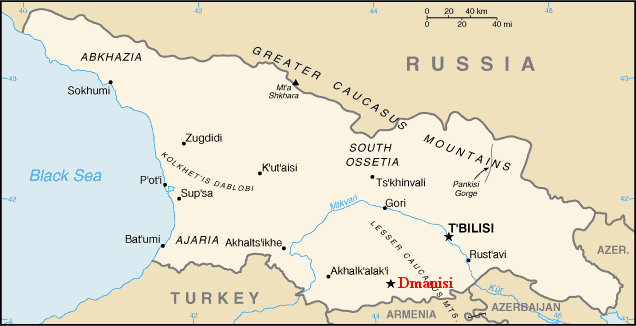|
Battle Of Aspindza
The Battle of Aspindza ( ka, ასპინძის ბრძოლა) was fought on 20 April 1770 between the Georgians, led by king of Kartli-Kakheti Erekle II, and the Ottoman Empire. The Georgians won a victory over the Turks. Background In the 1760s, shortly before the formation of the Kingdom of Kartli-Kakheti, King Heraclius II of Kakheti and his father, King Teimuraz II, repeatedly attempted to establish a military alliance with the Russian Empire against the Turks who occupied the entire southern border of the kingdom. Later, during the Russo-Turkish War, Empress Catherine II dispatched an expeditionary force of 1,200 men under the command of General Gottlieb Totleben to Georgia and King Heraclius II opened a second front against the Sublime Porte. In March 1770, Russian- Georgian forces marched on the Borjomi Valley and captured the fortress on April 14. Three days later, they besieged Atsquri, but the Georgian king and the Russian general soon came into confli ... [...More Info...] [...Related Items...] OR: [Wikipedia] [Google] [Baidu] |
Aspindza
Aspindza ( ka, ასპინძა ) is a ''daba'' ("small town") in southern Georgia's region of Samtskhe-Javakheti with a population of 2,793 (2014 census), mostly ethnic Georgians. It is located at around . History The word "Aspindza" derives from a Persian word "اسب انداز", which means "a place to rest". The year of the foundation the town is considered to be 888, as Leonti Mroveli ( ka, ლეონტი მროველი) tells - By the end of the 16th century Aspindza had been conquered by the Ottoman Turks. According to their census, "Aspindza was a big village, that consisted of 50 families with gardens and orchards". The village is mentioned in chronicle of Sumbat Davitisdze ( ka, სუმბატ დავითის ძე) and Vakhushti ( ka, ვახუშტი). ჯიქია; გურჯისტანის ვილაიეთის დიდი დავთარი. წიგნი III. გამოკვლევა. თბი� ... [...More Info...] [...Related Items...] OR: [Wikipedia] [Google] [Baidu] |
Battles Involving The Kingdom Of Kartli-Kakheti
A battle is an occurrence of combat in warfare between opposing military units of any number or size. A war usually consists of multiple battles. In general, a battle is a military engagement that is well defined in duration, area, and force commitment. An engagement with only limited commitment between the forces and without decisive results is sometimes called a skirmish. The word "battle" can also be used infrequently to refer to an entire operational campaign, although this usage greatly diverges from its conventional or customary meaning. Generally, the word "battle" is used for such campaigns if referring to a protracted combat encounter in which either one or both of the combatants had the same methods, resources, and strategic objectives throughout the encounter. Some prominent examples of this would be the Battle of the Atlantic, Battle of Britain, and the Battle of France, all in World War II. Wars and military campaigns are guided by military strategy, whereas batt ... [...More Info...] [...Related Items...] OR: [Wikipedia] [Google] [Baidu] |
Taylor & Francis
Taylor & Francis Group is an international company originating in the United Kingdom that publishes books and academic journals. Its parts include Taylor & Francis, CRC Press, Routledge, F1000 (publisher), F1000 Research and Dovepress. It is a division of Informa, a United Kingdom-based publisher and conference company. Overview Founding The company was founded in 1852 when William Francis (chemist), William Francis joined Richard Taylor (editor), Richard Taylor in his publishing business. Taylor had founded his company in 1798. Their subjects covered agriculture, chemistry, education, engineering, geography, law, mathematics, medicine, and social sciences. Publications included the ''Philosophical Magazine''. Francis's son, Richard Taunton Francis (1883–1930), was sole partner in the firm from 1917 to 1930. Acquisitions and mergers In 1965, Taylor & Francis launched Wykeham Publications and began book publishing. T&F acquired Hemisphere Publishing in 1988, and the compa ... [...More Info...] [...Related Items...] OR: [Wikipedia] [Google] [Baidu] |
Besiki
Besarion Zakarias dze Gabashvili ( ka, ბესარიონ ზაქარიას ძე გაბაშვილი), commonly known by his pen name Besiki ( ka, ბესიკი) (1750 – 25 January 1791), was a Georgian poet, politician and diplomat, known as an author of exquisite love songs and heroic odes as well as for his political and amorous adventures. Life Besiki was born and raised in Tbilisi, Georgia's capital. He belonged to a noble family, which claimed descent from the ancient city of Gibeon (Georgian: Gabaoni) in Palestine. The poet himself frequently used the surname Gabaoni, a variant of Gabashvili. Besiki's father, Zakaria, was a Georgian Orthodox priest and a confessor of King Teimuraz II. Zakaria was excommunicated and banished in 1764, but Besiki was allowed by King Erekle II to stay at the royal court where he received his education and began his career of a minstrel, his early style being influenced by Persian poetry and his older contemp ... [...More Info...] [...Related Items...] OR: [Wikipedia] [Google] [Baidu] |
Avars (Caucasus)
The Avars (), also known as Maharuls' (), are a Northeast Caucasian ethnic group. The Avars are the largest of several ethnic groups living in the Russian republic of Dagestan. The Avars reside in the North Caucasus between the Black Sea and the Caspian Sea. Alongside other ethnic groups in the North Caucasus region, the Avars live in ancient villages located approximately 2,000 meters above sea level. The Avar language spoken by the Caucasian Avars belongs to the family of Northeast Caucasian languages. Sunni Islam has been the prevailing religion of the Avars since the 14th century. Ethnonyms According to 19th-century Russian historians, the Avars' neighbors usually referred to them with the exonym Tavlins (''tavlintsy''). Vasily Potto wrote, "The words in different languages have the same meaning... fmountain dwellers rhighlanders."''В. А. Потто.'Кавказская война в отдельных очерках, эпизодах, легендах и биогр� ... [...More Info...] [...Related Items...] OR: [Wikipedia] [Google] [Baidu] |
Tbilisi
Tbilisi ( ; ka, თბილისი, ), in some languages still known by its pre-1936 name Tiflis ( ), ( ka, ტფილისი, tr ) is the Capital city, capital and List of cities and towns in Georgia (country), largest city of Georgia (country), Georgia, located on the banks of the Kura (Caspian Sea), Kura River. With around 1.2 million inhabitants, it contains almost one third of the country's population. Tbilisi was founded in the fifth century Anno Domini, AD by Vakhtang I of Iberia and has since served as the capital of various Georgian kingdoms and republics. Between 1801 and 1917, then part of the Russian Empire, it was the seat of the Caucasus Viceroyalty (1801–1917), Caucasus Viceroyalty, governing both the North Caucasus, northern and the South Caucasus, southern sides of the Caucasus. Because of its location at the crossroads between Europe and Asia, and its proximity to the lucrative Silk Road, throughout history, Tbilisi has been a point of contention ... [...More Info...] [...Related Items...] OR: [Wikipedia] [Google] [Baidu] |
Kura (South Caucasus River)
The Kura, also known in Georgian as Mtkvari ( ), is an east-flowing transboundary river south of the Greater Caucasus Mountains which drains the southern slopes of the Greater Caucasus east into the Caspian Sea. It also drains the north side of the Lesser Caucasus, while its main tributary, the Aras, drains the south side of those mountains. Starting in northeastern Turkey, the Kura flows through to Georgia, then into Azerbaijan, where it receives the Aras as a right tributary, and finally enters the Caspian Sea. The total length of the river is . People have inhabited the Caucasus region for thousands of years and first established agriculture in the Kura Valley over 4,500 years ago. Large, complex civilizations eventually grew on the river, but by 1200 CE most were reduced to ruin by natural disasters and foreign invaders. The increasing human use, and eventual damage, of the watershed's forests and grasslands, contributed to a rising intensity of floods through the 20th cen ... [...More Info...] [...Related Items...] OR: [Wikipedia] [Google] [Baidu] |
Childir Eyalet
The Eyalet of Childir () or AkhalzikOther variants of this name include Akalzike (from ) was an eyalet of the Ottoman Empire in the Southwestern Caucasus. The area of the former Çıldır Eyalet is now divided between Samtskhe-Javakheti and the Autonomous Republic of Adjara in Georgia and provinces of Artvin, Ardahan and Erzurum in Turkey. The administrative center was Çıldır between 1578 and 1628, Ahıska between 1628 and 1829, and Oltu between 1829 and 1845. History Samtskhe was the only Georgian principality to permanently become an Ottoman province (as the eyalet of Cildir). In the eighty years after the Battle of Zivin, the region was gradually absorbed into the empire. The Ottomans took the Ahıska region from the Principality of Meskheti, a vassal state of Safavid dynasty. In 1578, when the new province was established, they appointed the former Georgian prince, Minuchir (who took the name of ''Mustafa'' after converting to Islam) as the first governor. This e ... [...More Info...] [...Related Items...] OR: [Wikipedia] [Google] [Baidu] |
Akhaltsikhe
Akhaltsikhe ( ka, ახალციხე ), formerly known as Lomsia ( ka, ლომსია ), is a small city in Georgia's southwestern region () of Samtskhe–Javakheti. It is the administrative center of the Akhaltsikhe Municipality and the Samtskhe–Javakheti region. It is situated on both banks of the small river Potskhovi (a left tributary of the Kura), which divides the city between the old city in the north and new in the south. The 9th-century Akhaltsikhe (Rabati) Castle, which was recently restored, is located in the old part of the city. It is one of the main attractions of the Samtskhe–Javakheti region, along with Vardzia, Vale, Okrostsikhe and Zarzma. Toponymy Akhaltsikhe is the Georgian name of the town, which literally means "new fortress". It is attested in Arabic sources as (and ), in Persian as (also spelled as ), and in Turkish sources as . The Azerbaijani village of Axısxa is also named after it, due to the population of the village origin ... [...More Info...] [...Related Items...] OR: [Wikipedia] [Google] [Baidu] |
Atsquri Fortress
Atskuri ( ka, აწყურის ციხე) is a Georgian feudal fortress on the right bank of the Mtkvari (Kura) River, approximately 30 kilometres from Borjomi, in the Samtskhe-Javakheti region. Built in the 9th century, Atskuri Fortress was an important stronghold for the defense of Georgia during the Middle Ages In the history of Europe, the Middle Ages or medieval period lasted approximately from the 5th to the late 15th centuries, similarly to the post-classical period of global history. It began with the fall of the Western Roman Empire and .... History The fortress was probably situated near the town of Atskuri, of which no traces have been found. First mentioned in the 9th century, the fortress was significantly damaged in the 16th century, when it was occupied by the Turks. It was rebuilt in the 17-18th centuries. In the 1820s the fortress was abandoned.Zakaraya, P. (1983) Pamyatniki Vostochnoi Gruzii. Iskusstvo, Moskva, 376 p. akaraya, P. Monum ... [...More Info...] [...Related Items...] OR: [Wikipedia] [Google] [Baidu] |
Borjomi Gorge
Borjomi Gorge ( ka, ბორჯომის ხეობა) is a picturesque canyon of the Kura River in central Georgia. The gorge was formed as a result of the Kura River cutting its path through the Lesser Caucasus Mountains where the Trialeti and Meskheti Ranges meet. A significant portion of the Borjomi Gorge is covered by mixed and coniferous forests made up of oak, maple, beech, spruce, fir, and pine. A large portion of the Borjomi-Kharagauli National Park lies within the gorge, as well as the towns of Likani and Borjomi itself. Georgia About The cuts through a portion of the gorge ... [...More Info...] [...Related Items...] OR: [Wikipedia] [Google] [Baidu] |




